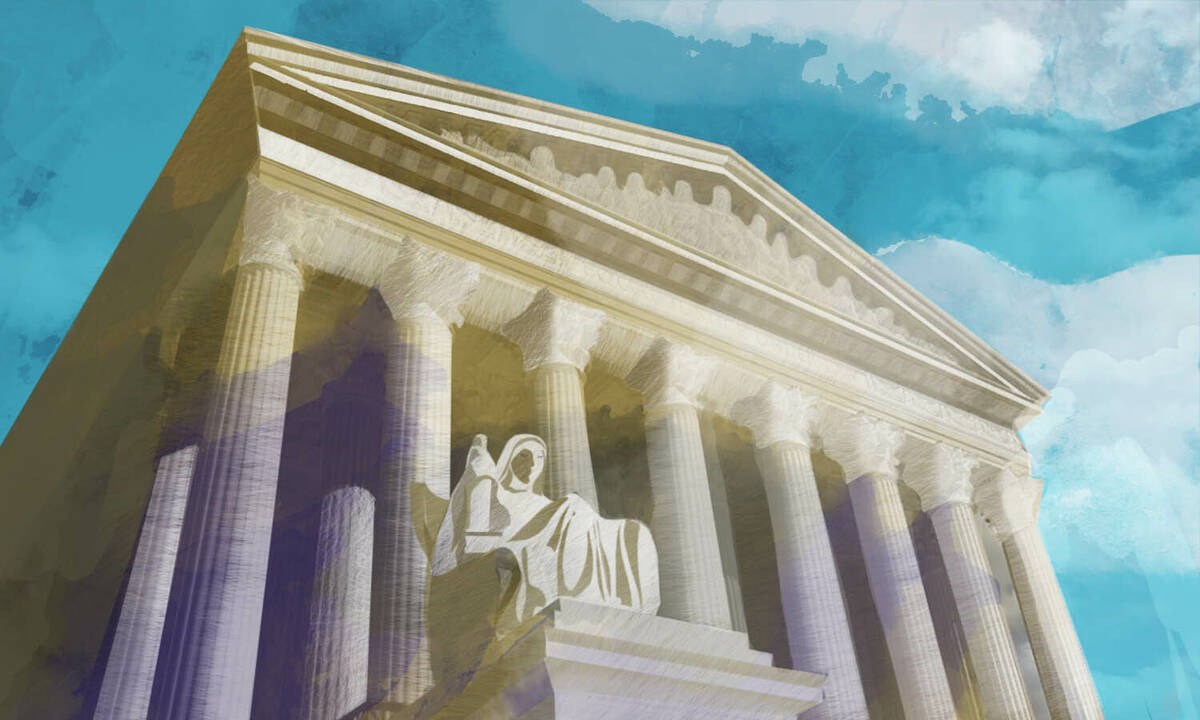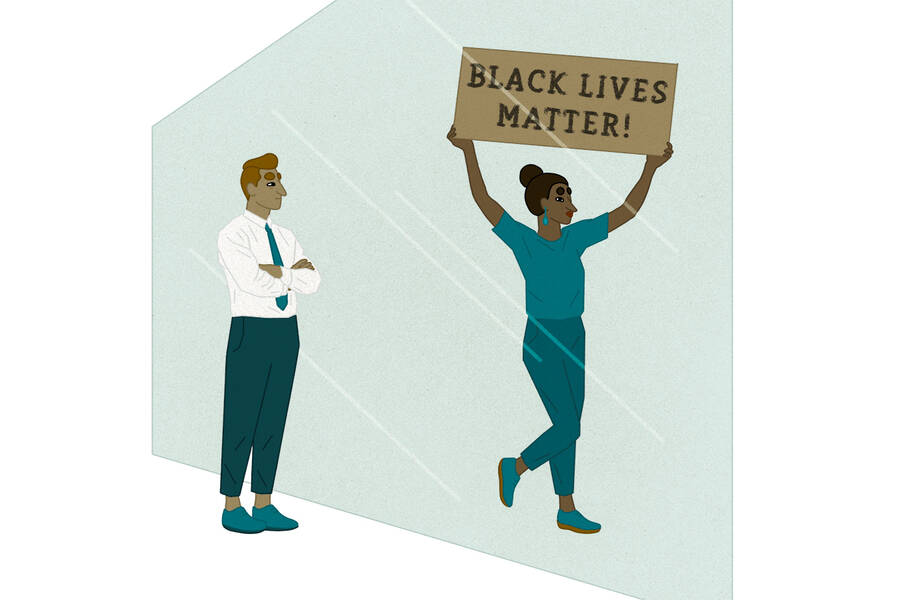Leadership Organizations Mar 6, 2022
3 DEI Leadership Lessons from Ketanji Brown Jackson’s Supreme Court Nomination
Studying Biden’s nomination process can help leaders “better connect their creeds and their deeds.”

Yevgenia Nayberg
My parents always told me as a kid that actions speak louder than words. Not surprisingly, leaders in every sector are feeling the intense heat of accountability as organizational stakeholders evaluate the alignment between their words and actions pertaining to diversity, equity, and inclusion (DEI). And while many leaders are unapologetic about having no intention to drive even a modicum of meaningful change, there are countless others who truly support DEI in their heads and hearts but are sheepishly paralyzed in practice—leaders who deeply struggle with making the transition from well-intentioned believer to high-impact builder.
For such leaders—and for all of us—President Biden’s historic nomination of Judge Ketanji Brown Jackson to become the first Black woman to serve on the Supreme Court is particularly instructive. If confirmed, Jackson would be only the eighth person to sit on the Supreme Court bench who was not a white man since the Court’s establishment in 1789. Biden, who has consistently signaled his commitment to use his presidential power to advance DEI, promised to nominate a Black woman to the Court in the event of a vacancy—and, to his credit, he followed through. Biden’s handling of Jackson’s groundbreaking nomination offers three practical lessons that can help leaders to get unstuck and, ultimately, better connect their creeds and their deeds.
Be precise with what “diversity” means in your context
One aspect of Biden’s approach to this Supreme Court nomination process that was as courageous as it was controversial is the precision with which he declared what “diversity” would look like in this case – namely, that he intended to diversify the Court by adding a Black woman. Without any context, the word “diversity” simply refers to our human differences, whether based on race, ethnicity, nationality, gender, religion, ideology, age/generation, or other factors; it does not expressly refer to particular types of people or assume a particular status hierarchy of haves and have-nots. But in the context of corporate DEI, “diversity” is most often used as an imprecise, catch-all category referring to all of the have-nots who are most often underrepresented in the executive ranks – individuals from a wide array of stigmatized, marginalized, and historically disadvantaged groups. Though politically correct, this imprecision often forestalls meaningful action because progress requires strategic acuity and tactical specificity. If Black and Hispanic women, for example, are not represented in senior management, leaders should say as much in addition to espousing a general commitment to “diversity.”
When committing to increase “diversity,” there can be wisdom in explicitly naming what “diversity” means in a particular context because it can force a sober analysis of which groups have been underrepresented, why, and what can be done to solve for the exclusion. After all, you cannot fix what you are unwilling to face. Ambiguous executive commitments to “diversity” may make for great soundbites, but alone, they rarely fuel measurable progress. To be sure, adopting a generic pro-diversity stance may be easier for leaders than articulating a specific vision of what diversifying their organizations will look like in clear, observable terms. And yet, summoning the clarity and courage to speak with precision can be key in helping leaders gain the traction to accelerate their DEI impact. The road to lasting change begins with a willingness to commit to a vivid picture of the organization’s current state and precisely what “diversity” progress will look like in practice.
Be Prepared to Combat the “Diversity Equals Deficiency” Myth
Upon the announcement of Justice Breyer’s retirement, President Biden promised to nominate a Black woman with “extraordinary qualifications, character, experience, and integrity” to the High Court. While these qualifiers should have been able to go unspoken, people of color, women, and others from historically underrepresented groups are chronically assumed to be incompetent until proven otherwise. Consequently, efforts to diversify organizations are routinely beset by a single question: whether the organization should hire the “best” available candidate or the “diverse” candidate. This cringeworthy “question” subtly suggests that underrepresented candidates will be inherently deficient because diversity and excellence are somehow opposites. Anyone who’s ever advanced underrepresented talent knows that the presumption of incompetence for “diverse candidates”—not to mention double-minorities like Jackson (who is both Black and a woman)—will be the proverbial elephant in the boardroom. Such thinking is nothing more than a paper-thin façade for a polished prejudice that believes that obstructing DEI progress is in the best interest of ensuring strong organizational performance.
Inaction is a decisive vote cast in favor of preserving the very status quo that DEI efforts are designed to transform.
— Nicholas Pearce
Never mind that this strawman of a myth has been deconstructed by decades of research that illustrates how diversity can enhance teams’ creativity, innovation, and performance. For some leaders who are DEI-sympathetic but struggle with the believer-to-builder transition, being confronted with this pseudo-logic can often be just enough to encumber—if not totally extinguish—their will to act. This insidious and pervasive rhetoric allows well-meaning executives who advocate for DEI to congratulate themselves for trying their best while absolving themselves—and the host of senior and mid-level managers who often peddle this prejudiced pablum—of any accountability for not doing their best to deliver measurable DEI results. Being prepared to call out and combat this myth can help leaders overcome resistance, not only when it comes to diversifying their workforces but also their roster of suppliers and business partners. As Allstate President and CEO Tom Wilson wisely remarked on the heels of a newsworthy $1.2B bond deal transacted exclusively using investment banks owned by people of color, women, and veterans, “Equity is good for all of us!”
Be at Peace with the Fact That You Will Be Criticized—No Matter What
Equity may be good for all of us, but the process certainly doesn’t always feel good; it can be quite messy. To be sure, Biden and his team most likely braced themselves for the impassioned criticism that would result from Jackson’s nomination—both from those who called his commitment to nominating a Black woman “offensive” and tantamount to “affirmative racial discrimination” and from those who criticized his focus on Black women instead of prospective nominees from other underrepresented or historically disadvantaged groups. Nevertheless, Biden made the decision to nominate Jackson. The road to zero progress is paved with good intentions that were never acted upon out of fear—fear of being misunderstood or attacked, fear of losing the support of key leaders who oppose your efforts, or even the fear of simply making some people unhappy and uncomfortable.
Ironically, the very empathy that enables executives to build relationships and champion DEI can also undermine a leader’s will to take bold, decisive, DEI-advancing actions that may foment controversy or attract criticism. When not balanced with moral clarity and courage, empathy can turn otherwise visionary leaders into ineffective people-pleasers who just want everyone to feel good. Such leaders can be easily paralyzed by their high sensitivity to the criticism that comes with staking out a bold position at the vanguard of change on DEI. Sadly, though, doing nothing is not the same as doing no harm—inaction is a decisive vote cast in favor of preserving the very status quo that DEI efforts are designed to transform. At the end of the day, even empathetic leaders must actually lead. Biden’s action is proof that leaders will never be able to please both the DEI believers and the blockers at the same time. Being all-in on DEI will lead to disappointment—leaders just have to choose whom they can and cannot live with disappointing, including themselves.
Leadership in these times is not for the faint of heart and is certainly not a popularity contest. In fact, courageous leaders will be misunderstood, maligned, and even mishandled. Advancing DEI requires courage because transformational change is never easy or universally embraced. Critics will always criticize, but builders must build. In the case of Ketanji Brown Jackson’s nomination to the Supreme Court, President Biden made a values-based, legacy-defining decision that will loudly echo through the corridors of history. For those of us leaders who really do believe in the value and importance of DEI but have had difficulty with translating our intent to impact, Biden’s approach to the Jackson nomination can inspire us to finally get unstuck—for good.
*
This article originally appeared in Forbes.



